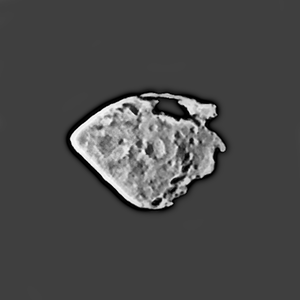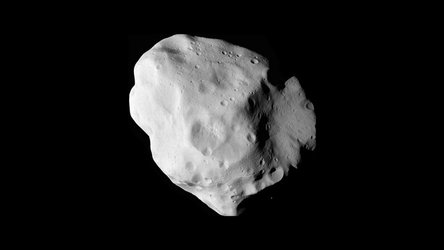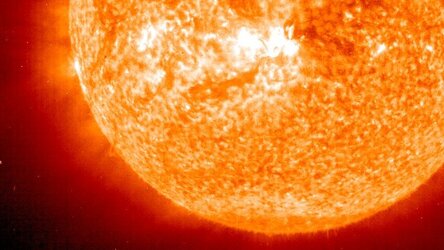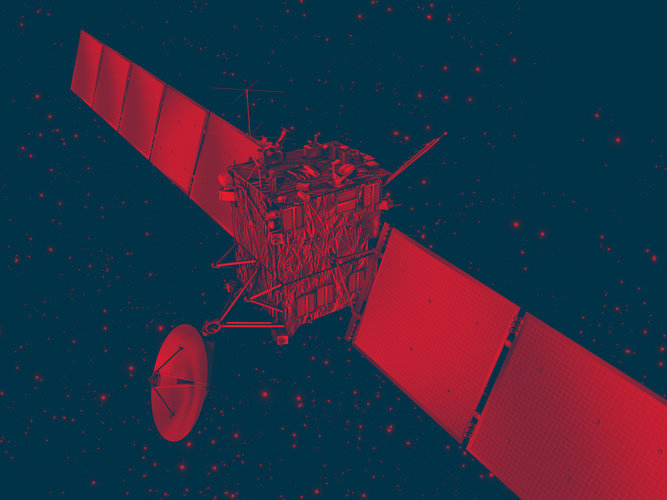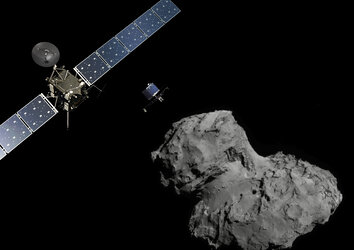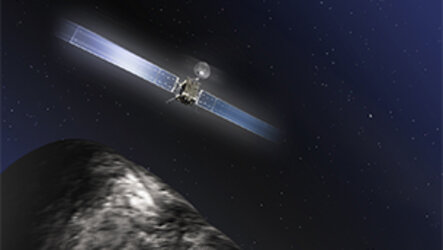Moonrise over Earth, by Rosetta
The Moon rises above clouds blanketing the Pacific Ocean in this image taken by ESA’s Rosetta spacecraft during its first flyby of Earth eight years ago.
The photo was taken just a few minutes before the spacecraft’s closest approach of our home planet at an altitude of about 1950 km on 3 March 2005.
While various cloud formations in the foreground first catch the eye, the image also reveals the delicate nature of Earth’s atmosphere as a thin veil that separates us from the harsh space environment.
Here, the Moon is captured as it rises above the limb of Earth, over the Pacific Ocean. The Moon appears rather dark, with Oceanus Procellarum or ‘Ocean of Storms’, face-on. It is the largest of lunar ‘seas’, formed from ancient volcanic lava flows that erupted onto the Moon’s surface during its early history.
Rosetta’s eventual destination is comet 67P/Churyumov–Gerasimenko, and since launch in March 2004, it has looped around Earth three times (2005, 2007 and 2009) and Mars once (2007) for gravitational kicks to boost it onto its comet-chasing orbit.
The spacecraft has also encountered and imaged two asteroids: (2867) Steins on 5 September 2008 and (21) Lutetia on 10 July 2010.
Rosetta entered deep-space hibernation in June 2011 and will wake up on 10 January 2014 to proceed to its rendezvous with the comet several months later.
Rosetta will escort the comet around the Sun, witnessing for the first time how a frozen comet is transformed by the warmth of the Sun.
The mission also includes a lander, Philae, which will settle on the comet’s surface in November 2014 in the first landing of its kind.
Comets are considered the most primitive building blocks of the Solar System, and likely helped to ‘seed’ the Earth with water, the very ingredient needed for life to flourish. By studying the nature of the comet’s solid and gaseous constituents, Rosetta will help scientists to learn more about the role of comets in the evolution of the Solar System.
This image was first released on the ESA Portal along with more images from the spacecraft’s first Earth flyby, and reprocessed here by Emily Lakdawalla.















 Germany
Germany
 Austria
Austria
 Belgium
Belgium
 Denmark
Denmark
 Spain
Spain
 Estonia
Estonia
 Finland
Finland
 France
France
 Greece
Greece
 Hungary
Hungary
 Ireland
Ireland
 Italy
Italy
 Luxembourg
Luxembourg
 Norway
Norway
 The Netherlands
The Netherlands
 Poland
Poland
 Portugal
Portugal
 Czechia
Czechia
 Romania
Romania
 United Kingdom
United Kingdom
 Slovenia
Slovenia
 Sweden
Sweden
 Switzerland
Switzerland

























